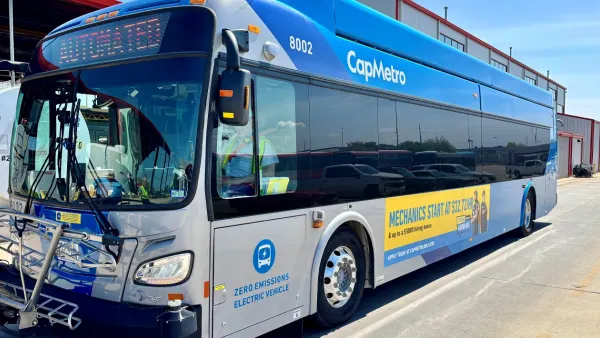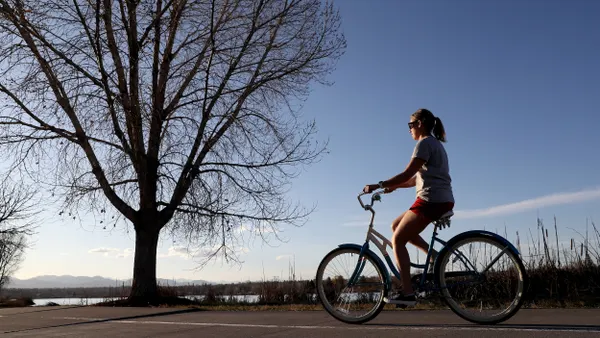Dive Brief:
- The number of pedestrian fatalities in 2018 is projected to be the highest since 1990, according to preliminary data from an annual report from the Governors Highway Safety Association (GHSA).
- GHSA's preliminary projection puts the year's total fatalities at 6,227, a 4% increase over 2017 that continues an upward trend in fatality numbers. The number of pedestrian deaths increased by 35% from 2008 to 2017, despite a 6% decrease in all other traffic deaths combined.
- Despite the overall increase, 23 states had fewer pedestrian fatalities than in 2017. And fatalities in the 10 largest U.S. cities dropped 15% from 2016 to 2017.
Dive Insight:
The GHSA report indicates five states — Arizona, California, Florida, Georgia and Texas — account for 46% of the deaths, yet they represent 33% of the country's population. Arizona, Florida and Texas are among the 10 states with the highest population growth over the past year, which could bear a link to a rise in pedestrian deaths.
The increases largely are occurring at night. From 2008 to 2017 the number of nighttime fatalities bumped up by 45%, compared with an 11% increase in daytime fatalities. Overall, about 75% of deadly pedestrian traffic accidents occur after dark.
The growth in smartphone use over the past decade, and thus distracted driving, could be a widespread contributing factor, as could regional or local differences in land-use patterns, roadway designs, vehicle speeds and economic conditions. The growth in light truck and SUV ownership also could contribute because pedestrians are more likely to die when hit by one of those vehicles than by a passenger car.
Alcohol impairment has a strong presence in both pedestrian and driver fatalities. Overall, 32% of pedestrians and 17% of drivers killed in traffic accidents had a blood alcohol concentration (BAC) of 0.08 or higher. The percentage of fatally-injured pedestrians with a 0.08 BAC was around 40% for all age groups in the 21-54 range. The report notes that even if a pedestrian's or driver's BAC is not listed in a police report as a contributing factor during a crash, having a BAC at or above 0.08 could impact a person's judgment, decision making and reaction time.
72% of the fatal incident did not occur at an intersection. The report notes that "although it is impossible to make all non-intersection locations safe or suitable for pedestrian activity," increased lighting and better speed management and enforcement at mid-block locations could boost pedestrian safety. Advocates have urged less "victim-blaming" of pedestrians, and that the focus must be on street design and other innovations.
The report broke down what states are doing to improve pedestrian safety. A large number of the states rely on educational campaigns, with infrastructure improvements and enforcement — of both driver and pedestrian behavior — getting a number of mentions.
Cities have demonstrated a greater commitment to increasing pedestrian safety in recent years as fatalities have climbed. Los Angeles and Portland, OR lowered speed limits in portions of the cities as part of their Vision Zero initiatives. Last fall, Boston released an update to its Vision Zero initiative that included lower speed limits, traffic calming measures and a prioritization of transportation projects to address transportation inequality. Around the same time New York City launched special driver safety programs for high school seniors in an effort to reduce pedestrian fatalities, in addition to increased enforcement of traffic violations after sunset.











